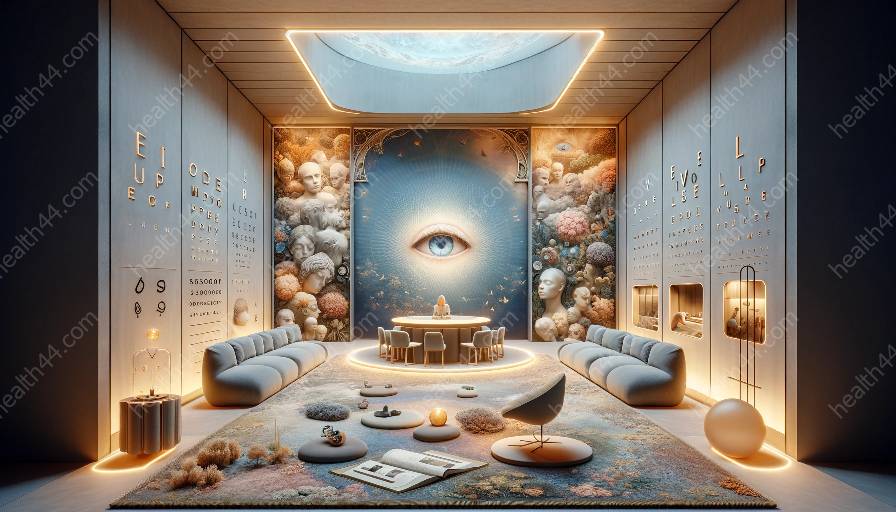Depth perception is a crucial aspect of human vision, enabling us to perceive and interact with the three-dimensional world around us. It is a complex process that involves the integration of visual cues and cognitive processes. In the context of vision psychology and perception, depth perception plays a fundamental role in shaping our understanding of the environment and influences our interactions with the world.
Overview of Depth Perception
Depth perception refers to the ability to perceive the relative distance of objects in the visual field. It allows us to differentiate between objects that are near and far, and to interpret the spatial relationships between them. This ability is essential for tasks such as navigating through space, reaching for objects, and perceiving the layout of our surroundings.
Visual Cues and Depth Perception
Our perception of depth is influenced by a variety of visual cues, including:
- Binocular Cues: Binocular cues, such as retinal disparity and convergence, rely on the input from both eyes to determine depth. Retinal disparity occurs because each eye has a slightly different view of the same visual scene, allowing the brain to calculate depth based on the differences in the retinal images. Convergence, on the other hand, refers to the inward movement of the eyes when focusing on nearby objects, providing a sense of depth perception.
- Monocular Cues: Monocular cues are visual cues that can be perceived with one eye. These include cues like interposition, relative size, linear perspective, texture gradient, and motion parallax, which provide depth information based on the characteristics of the visual stimuli.
Depth Perception and Illusions
Our depth perception can be influenced by various visual illusions, such as the Ponzo illusion, the Müller-Lyer illusion, and the Ames room illusion. These illusions demonstrate how our brain can be tricked into perceiving depth and size inaccurately, highlighting the complexity of depth perception and the role of cognitive processes in interpreting visual information.
Cognitive Factors in Depth Perception
Depth perception is not solely reliant on visual cues but also involves cognitive processes such as attention, memory, and learning. Psychological research has revealed that our depth perception can be influenced by factors such as past experiences, cultural background, and individual differences, further emphasizing the intricate relationship between vision psychology and perception.
Depth Perception and Vision Care
Understanding depth perception is essential in the context of vision care, as it directly impacts an individual's visual experiences and capabilities. Impairments in depth perception can affect tasks such as driving, sports, and other activities that require accurate perception of distances and spatial relationships.
Implications of Depth Perception for Vision Care
For individuals receiving vision care, consideration of depth perception is vital in diagnosis, treatment, and rehabilitation. Eye care professionals need to assess the patient's depth perception to understand the impact of visual impairments on their daily activities and to develop appropriate interventions to address any deficits in depth perception.
Conclusion
Depth perception is a multifaceted topic that encompasses the realms of vision psychology, perception, and vision care. Exploring the complexities of how we perceive depth and the interplay of visual cues and cognitive processes enhances our understanding of human visual experiences. By recognizing the significance of depth perception, we can promote better vision care practices and improve the quality of life for individuals with visual impairments.


